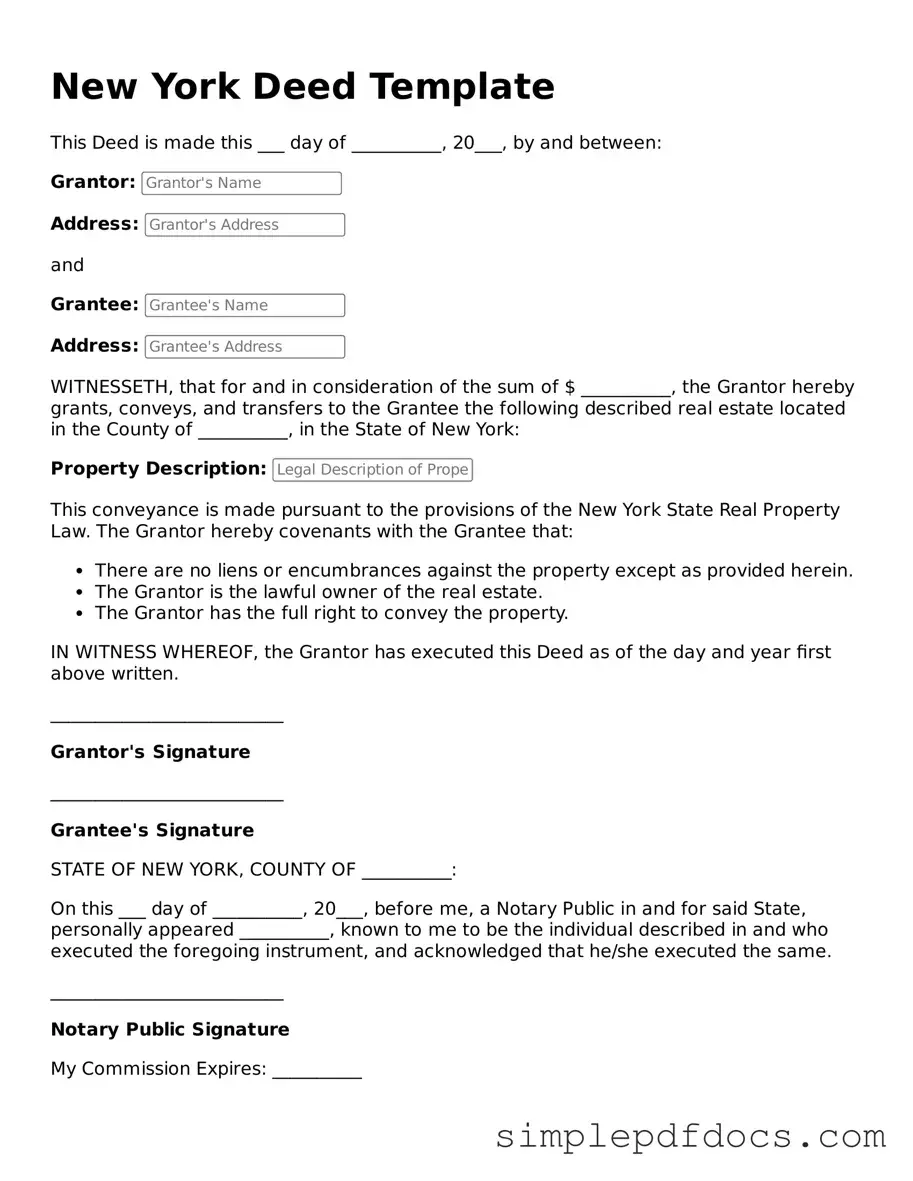The New York Deed form plays a crucial role in the transfer of real estate ownership, serving as a legal document that solidifies the transaction between the seller and the buyer. This form captures essential information, including the names of the parties involved, the property’s legal description, and the terms of the sale. It is vital to ensure that the deed is properly executed and notarized to prevent any future disputes or claims. Different types of deeds exist, such as warranty deeds and quitclaim deeds, each offering varying levels of protection to the buyer. Understanding the nuances of these forms is essential for anyone looking to navigate the complexities of real estate transactions in New York. Furthermore, the deed must be filed with the county clerk’s office to make the transfer public, which is a critical step in establishing clear title to the property. Without a properly executed deed, the rights to the property can become murky, leading to potential legal challenges down the line. Thus, familiarity with the New York Deed form is not just beneficial; it is imperative for anyone involved in real estate dealings in the state.
